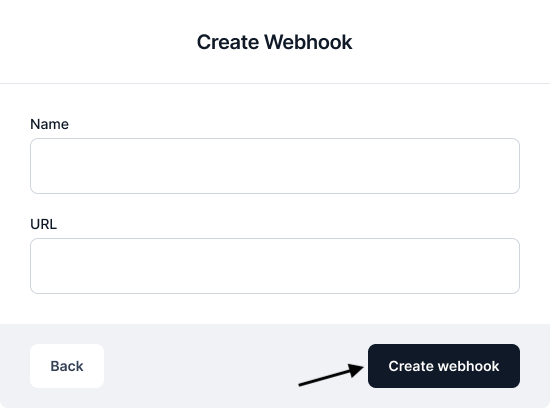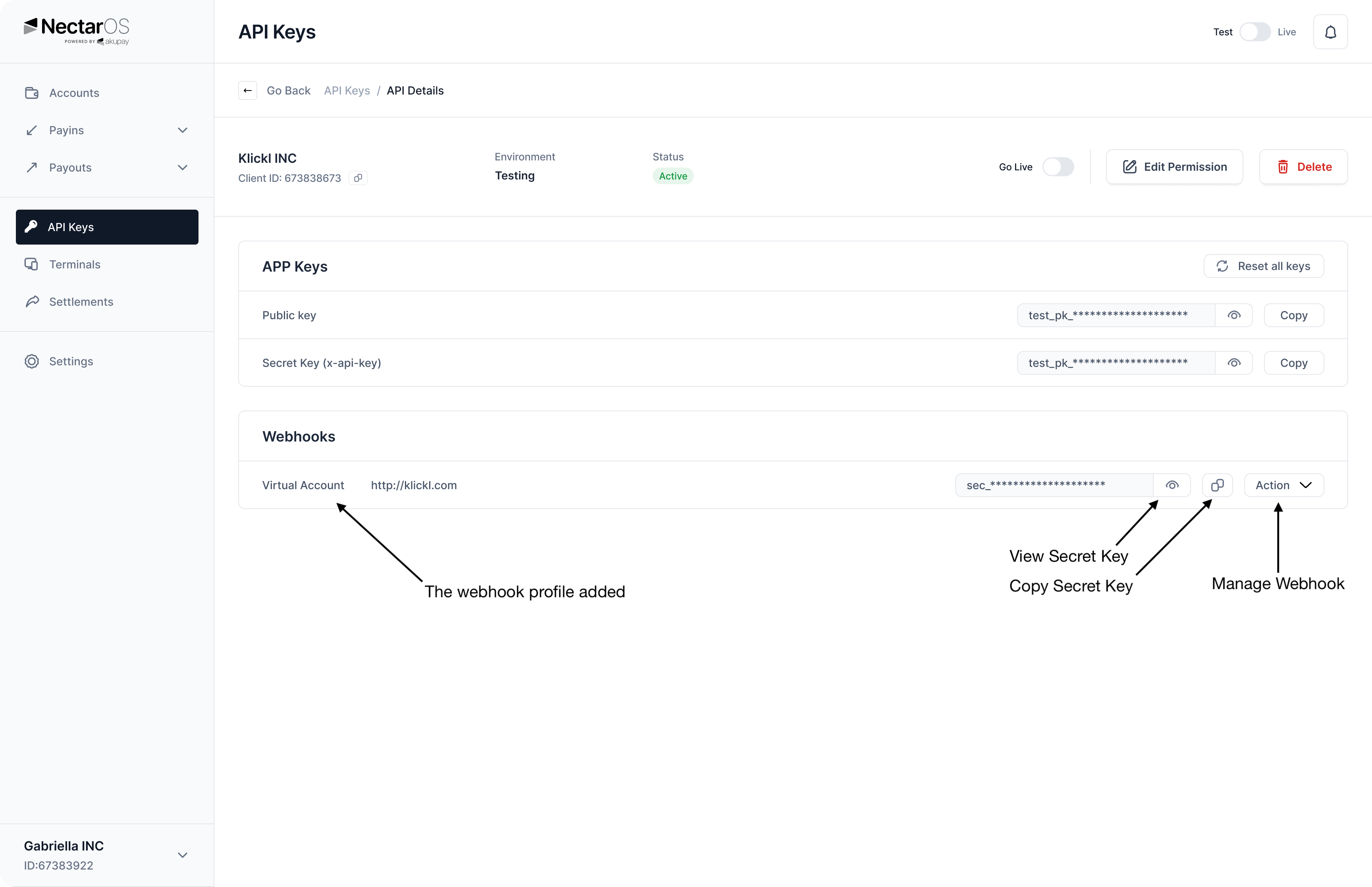Setup Webhook
To enable webhooks for an API key profile, log in to your account on the Payment Provider dashboard, go to the API Keys section under the Settings menu, and choose the API key profile for which you want to manage webhooks.

Within the API key management page, scroll to the bottom where you will find a section dedicated to managing webhooks.

Enter the URL(s) where you want to receive webhook notifications. You can add multiple URLs if needed.

Once you have entered the webhook URL(s), save your changes. The API will now send notifications to these URLs whenever relevant events occur.
Manage Webhook
Once the webhook has been added, it would now appear in the webhook profile list as seen below:

Note: A secret token is used to generate a signature for each webhook payload, providing a mechanism to verify that the webhook notifications originate from our API and have not been tampered with.
Sample Webhook Payload
{
}
Managing Webhooks Best Practices
- Security:
Use HTTPS URLs to ensure secure transmission of webhook data.- Validation:
Validate incoming webhook payloads to ensure they originate from our API.- Prevent double webhooks recording:
Implement logic using the transaction id or reference, to verify that a webhook has not already been received and recorded.- Monitoring:
Monitor webhook delivery and response codes to ensure reliability.By setting up webhooks, you can streamline your application's workflow and stay informed about critical events in real-time. This integration enhances the efficiency and responsiveness of your payment processing system.
Updated 6 months ago